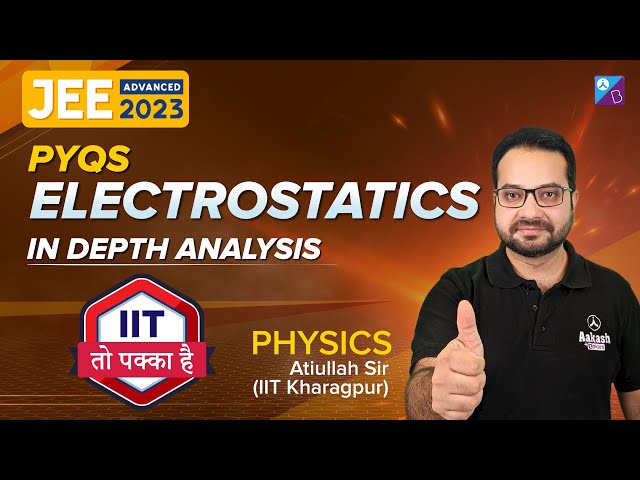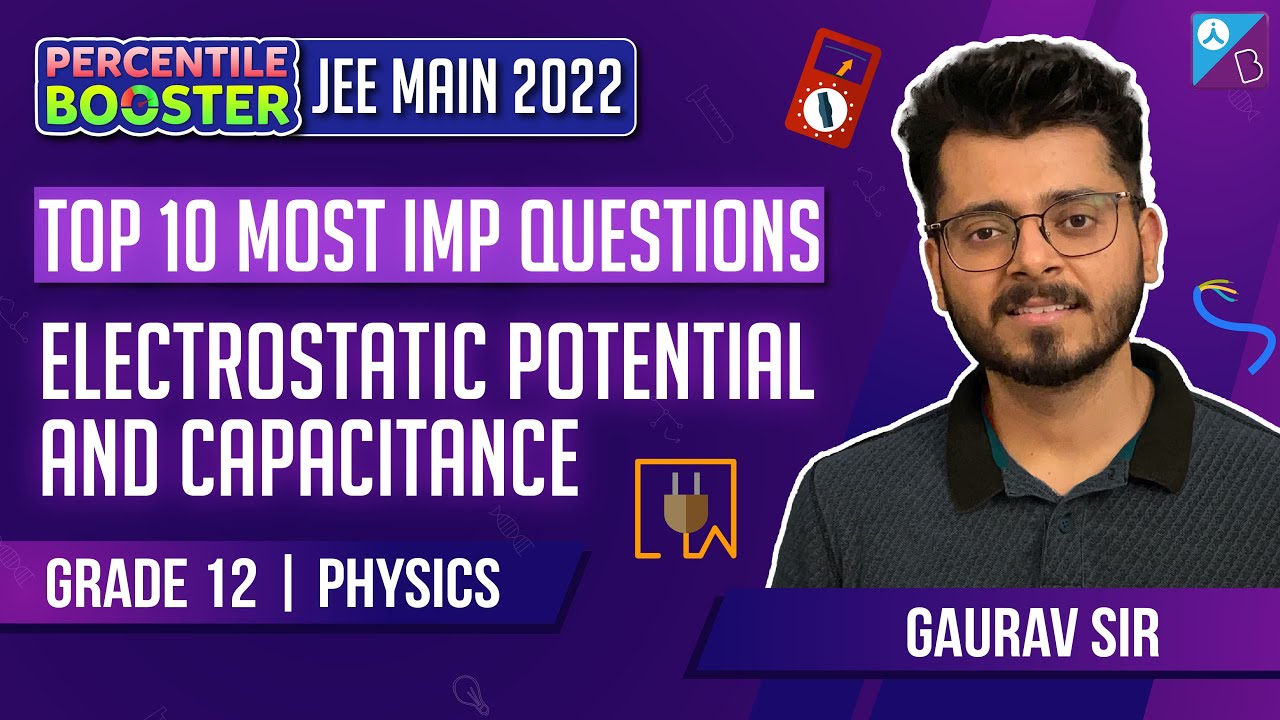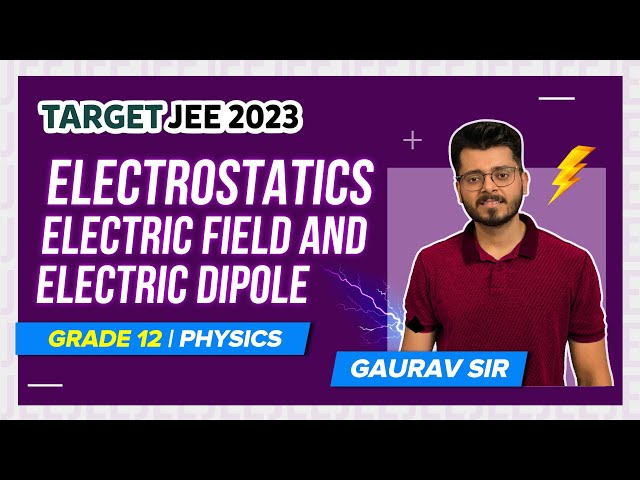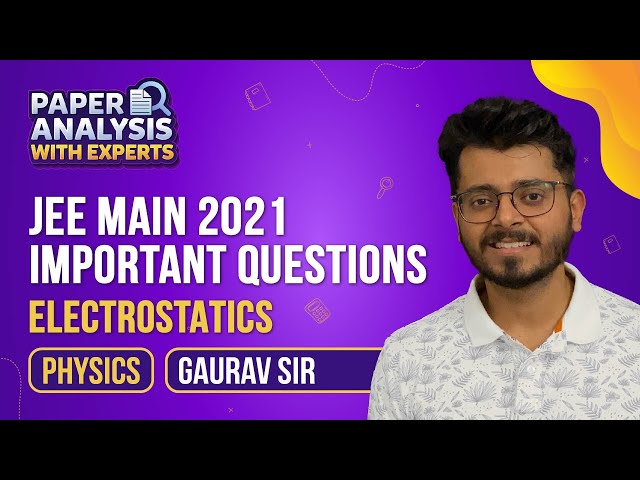Electrostatics deals with static electricity. The study of electrostatics requires the concept of electric charge. Atoms contain positive charges (protons) and negative charges (electrons). However, the atom as a whole is electrically neutral. This means that atoms contain equal amounts of positive and negative charges. A body can be charged by the removal or addition of electrons to it. The process of charging a body is known as electrification.
Download Electrostatics JEE Advanced Previous Year Questions With Solutions PDF
Question 1) Three concentric metallic spherical shells of radii R, 2R, 3R, are given charges Q1:Q2:Q3 respectively. It is found that the surface charge densities on the outer surfaces of the shells are equal. Then, the ratio of the charges given to the shells, Q1:Q2:Q3
(A) 1 : 2 : 3
(B) 1 : 3 : 5
(C) 1 : 4 : 9
(D) 1 : 8 : 18
Answer: (B) 1 : 3 : 5
Solution:
The charge distribution on the outer surface of the shell will be
For shell 1 → Q1
For shell 2→ Q1+Q2
For shell 3 → Q1+Q2+Q3
Given that the surface charge density on the outer surface of the shell is equal. Thus, we have
Solving, we get Q1:Q2:Q3 = 1: 2: 3
Question 2) An infinitely long solid cylinder of radius R has a uniform volume charge density. It has a spherical cavity of radius R/2 with its centre on the axis of the cylinder, as shown in the figure. The magnitude of the electric field at the point P, which is at a distance of 2R from the axis of the cylinder, is given by the expression 23ρR/16kɛ0. The value of k is

Answer: (6)
Solution:
The magnitude of the electric field at the point P which is at a distance 2R from the axis of the cylinder
E = Etotal – Ecavity

Question 3) The work done in carrying a point charge from one point to another in an electrostatic field depends on the path along which the point charge is carried.
Answer: False
Solution:
The electrostatic force is conservative in nature. Hence work done is path independent.
Question 4) There is a uniform electrostatic field in a region. The potential at various points on a small sphere centred at P, in the region, is found to vary between in the limits 589.0 V to 589.8 V. What is the potential at a point on the sphere whose radius vector makes an angle of 600 with the direction of the field?
(A) 589.5 V
(B) 589.2 V
(C) 589.4 V
(D) 589.6 V
Answer: (C) 589.4 V
Solution:
Potential gradient is given by
ΔV = E.d
0.8 = E.d (max)
ΔV = Edcosθ = (0.8/d) x d x cos 60 = 0.4
Therefore, V + ΔV = 589 + 0.4 = 589.4 V
Question 5) An electric field
(A) -110 J
(B) -140 J
(C) -120 J
(D) -130 J
Answer: (A) -110 J
Solution:
As we know, E = -dv/dx
Potential at x = 2 m, y = 2m is
On solving we get, V = -110 J
Question 6) Assume that an electric field
(A) 120 J/C
(B) -120 J/C
(C) -80 J/C
(D) 80 J/C
Answer: (C)- 80 J/C
Solution
The potential difference between any two points in an electric field is given by
VA – V0 = -[10x3]02 = – 80 J/C
Question 7) For the circuit shown in the figure, which of the following statements is true?

(A) With S1 closed, V1 = 15 V, V2 = 20 V
(B) With S3 closed, V1 = V2 = 25 V
(C) With S1 and S2 closed, V1 = V2 = 0
(D) With S1 and S2 closed, V1 = 30 V, V2 = 20 V
Answer: (D) With S1 and S2 closed, V1 = 30 V, V2 = 20 V
Solution
When S1 is closed V1=30V, V2= 20V
When S3 is closed V1=30V, V2= 20V
When S1 and S2 are closed V1=30V, V2= 20V
When S1 and S3 are closed V1=30V, V2= 20V
When S1, S2 and S3 are closed V1+V2=0 V, V1=0, V2=0V
Question 8) A hollow metal sphere of radius 5 cm is charged such that the potential on its surface is 10 volts. The potential at the centre of the sphere is
(A) zero
(B) 10 volts
(C) same as at a point 5 cm away from the surface
(D) same as at a point 25 cm away from the surface
Answer: (B) 10 volts
Solution
The electric potential at the surface of the sphere will be the same as the potential at the centre of the sphere and at any point inside a hollow metallic sphere. Therefore, if the potential at the surface is 10 V, the potential at the centre will also be 10 V.
Question 9) Concentric metallic hollow spheres of radii R and 4R hold charges Q1 and Q2 respectively. Given that the surface charge density of the concentric spheres are equal, the potential difference V(R) – V(4R) is
(A) 3Q1/16πε0R
(B) 3Q2/4πε0R
(C) Q2/4πε0R
(D) 3Q1/4πε0R
Answer: (A) 3Q1/16πε0R
Solution
We have given two metallic hollow spheres of radii R and 4R having charges Q1 and Q2 respectively. Potential on the surface of the inner sphere (at A)

Potential on the surface of the outer sphere (at B)
Potential difference,
Question 10) A charge Q is divided into q and (Q – q). If Q/q = x, such that the repulsion between them is maximum, find x.
(A) 1
(B) 2
(C) 3
(D) 4
Answer: (B) 2
Solution:
As we know, F = (k(Q−q)q) /d2
For F to be maximum,
dF/dq = 0
⇒ Q − 2q = 0
⇒ Q/q = 2
⇒ x = 2
Also Read:
Electrostatics JEE Main Previous Year Questions With Solutions
Video Lessons
Electrostatics JEE Advanced PY Questions

Top 10 Important Questions of Electrostatic Potential and Capacitance

Electric Field & Electric Dipole

Electrostatics – Important Questions

Comments